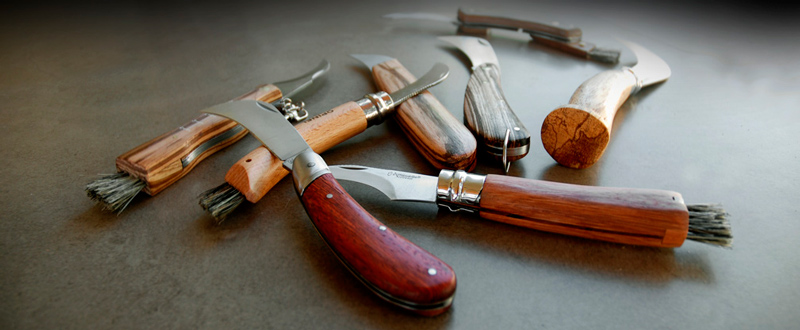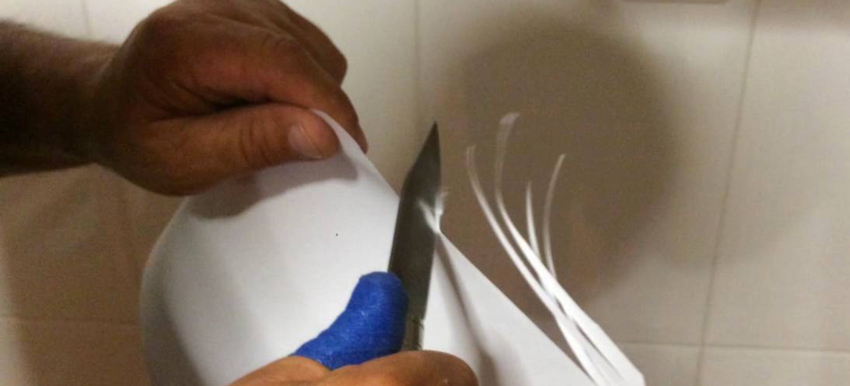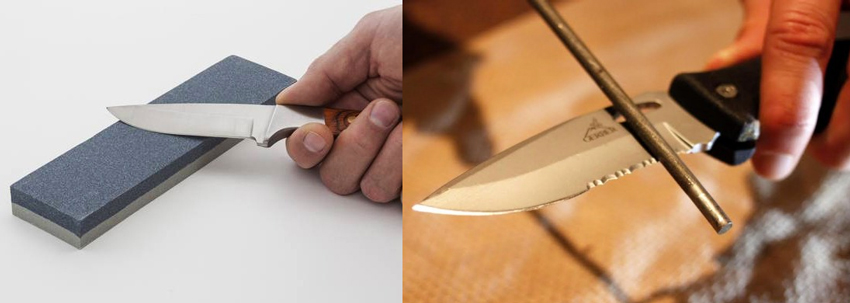How to sharpen a razor
8 years ago · Updated 6 months ago

Tips for maintaining and sharpening your mushroom knife
Not so long ago, you could still hear the characteristic whistle of the sharpener on the streets. It was quite a sight to see his dexterity with the rifle and how he spun the sharpening stone. Sadly, the profession of professional sharpener has all but disappeared, and today it's us who have to deal with sharpening scissors, knives and cutlery ourselves.
In the world of mycology, the knife is an indispensable tool. Every mushroom researcher always carries one -or several- in his equipment. But like any tool, the mushroom knife or any field knife requires care and maintenance to continue working to perfection for many seasons.
Basic care for your mycological knife
As we've already mentioned, a good knife is essential for any outing in the mountains. There are many different types of knife: field, multi-purpose, camping... And within mycological knives, there are also several specialists: slicers, sergers, brush knives, straight knives....
Each model has its own characteristics and functions, so it's advisable to have at least one good knife and, if possible, several to be able to adapt according to the outing or type of mushroom you're going to collect.
A well-maintained knife allows you to cut, clean, peel or pry safely and efficiently. These are simple tasks, but only if they're carried out with the right tool and in good condition.
In future articles, we'll tell you about the different types of mushroom knives and their most recommended uses. But remember, the first step to extending the life of your knife is good maintenance and, of course, sharpening.

Basic tips for knife maintenance
A good knife is an indispensable tool, but also a delicate one. If you want to extend its life and keep it in perfect condition, follow these basic tips for use and care:
- Always handle the knife safely.
Remember that a knife can cause damage if not handled correctly. Always use it with care to avoid cuts or accidents. - Clean your pocket knife after each use.
If remnants of soil, vegetation or fungi adhere during a mountain outing, try to clean it as soon as possible. It's much easier to remove dirt at the time than afterwards, when it's dried out. - If necessary, clean the knife again at home.
If any tough residue remains, wash the knife by hand with a sponge and liquid dishwashing soap. Be sure to dry it thoroughly before storing. - Don't put the knife in the dishwasher.
Dishwashing can dull the blade and damage the handle, especially if it's made of wood or sensitive materials. The best option is always hand washing. - Store it properly
When not in use, store the knife in a sheath or box that protects it and holds it in place to prevent shock or damage. - Keep your knife sharp.
With use, it's normal for the blade to lose its sharpness. You can sharpen it yourself with a whetstone, sharpening gun or specific sharpening stone. Of course, make sure you know the correct technique to avoid damaging the edge or surface of the blade. There are currently utensils that work only on the cutting edge part, avoiding scratching the rest of the knife.Despite this, the best option if you want a professional result is to consult a specialized sharpener.
By following these simple tips, you'll have your knife in perfect condition for many seasons to come.
Use a sharpener or rifle. The importance of keeping the knife sharp
Whether a camp knife, kitchen knife, adventure knife . . . or any type of knife is sharp is far more important than you might think, and many users talk about the art of sharpening.
Although it may seem the opposite, a well-sharpened knife or cutter is safer to control, safer to use and therefore easier to master. We'll cut without making forceful or strange movements, and we'll be less likely to cut ourselves.
On the other hand, a cut made with a sharp knife is very clean, looks better and, in the case of food, damages it less at cellular level.

Tanto las navajas, como cuchillos y otras herramientas corte como hachas, sierras, ... han de ser afiladas de manera periódica, utilizando aceite y según el ángulo necesario para cada filo. Quieres aprender como afilar tijeras y otros utensilios? Os contamos a continuación cómo se realiza un buen afilado:
Utiliza un poco de aceite para afilar tu navaja.
Evitarás que las partículas del filo se incrusten en la chaira además de conseguir un mejor acabado.
El angulo ideal para afilar tu navaja es de 12º.
You'll get better sharpening the closer you get to this angle when sharpening your camping, mountain or mushroom knife. You just need practice to succeed in sharpening at this precise angle.

-
- Move the whetstone in a circular motion.
- You'll get a more even finish and the edge will have more consistency.
- Repeat these steps on both sides of the knife or blade.
- Keep your razor clean in addition to sharpening it periodically
.
- Use a metal-cleaning liquid applied with a cloth to clean your razor. You'll keep your razor looking like new.
See you in the woods!

Te pueden interesar